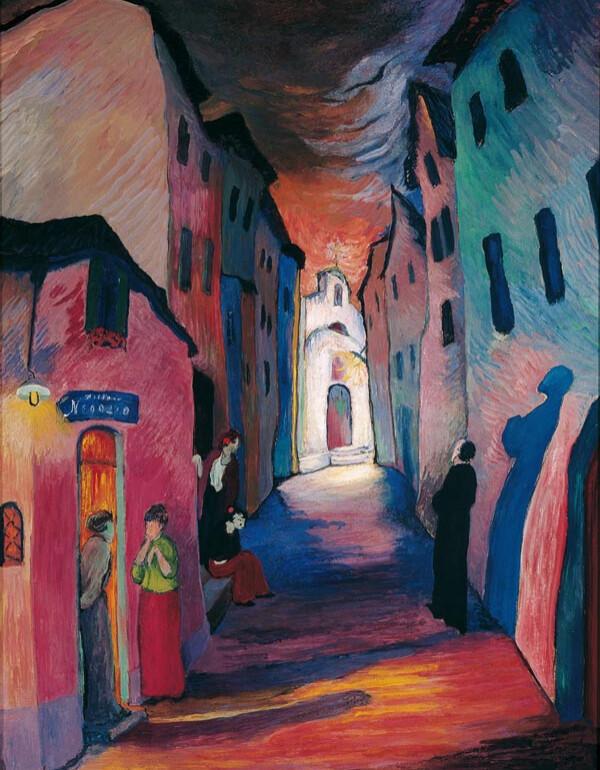
Marianne von Werefkin's 1 1927 Ave Maria painting is beautiful. It has strong religious undertone. The church is central to the composition. It is set deep in the background and painted near-white in sharp contrast to the rich colours everywhere else. The alley terminates at the church. And the buildings seem to bend towards the church, as if in worshipful deference. All this suggests its thematic importance?
And yet, although central and important, the church's paleness and placement detaches it from the rich colours and textures of everyday cosmopolitan life shown in the foreground. In the foreground, the three groups of people represent three different relations to religion.
Normal Life. The couple idly chatting on the front left are bathed in rich and organic colour both outside and inside. They pay no heed to the church. She holds her hands in a coy gesture. Their organic warmth contrasts starkly with the plain whiteness of the church.
Life in the Shadows. The two ladies further down the ally on the left appear dejected. They seem outcast and idle. The one woman looks to the church and the other looks to the priestly figure, but both remain distant.
Life Outside of Life. The black robed priestly figure is oriented to the church. His shadow cast on the wall is interesting. There is no light source in the painting which could have cast such a shadow? And it was painted with greater definition than the shadows of the couple from Normal Life. It's as if the cleric's shadow is alive independently, perhaps representing his soul or spirit? But the white mask worn by the cleric suggests fakeness.
A bat flies above in the ominous gloomy sky, perhaps representing a pervasive and threatening evil realm beyond.
Download PDF on-ave-maria-painting.pdf (171 KB)